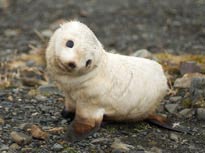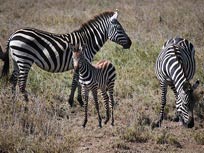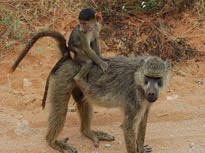How do we organize all these 5096 species, you might ask?
- Kingdom : Animalia
- Phylum : Chordata --> Those with backbones
- Class : Mammalia --> This site is all about this class.
- Subclass : Prototheria, Metatheria and Eutheria --> egg-layers, marsupials and those mammals with wombs(humans, for example).
- Order: Organized within subclasses are 29 orders. We humans belong to the order of Primates.
- Families: Within an order there is a distinct grouping of families. We belong to the family Hominidae.
- Genus : Within our family, we are classified under the genus homo( means human).
- Species: Neanderthals were a different species than us homo sapiens. We also know of other human-like species like homo habilis(toolmakers) and homo erectus( walking erect).
Class Mammalia
Mammals are those rather interesting, humanesque, intelligent, somewhat hairy, rather hot-blooded animals whose babies are almost always born prematurely. A joey cannot survive out of the pouch for more than a few minutes when it is born. A human baby, likewise needs milk, incessant feeding and caring for a decade before it can survive in nature. Why did these creatures become the most dominant class? They should have gone extinct during the times of the great saurians. On the contrary, they actually thrive in adverse climes and are able to adapt much better to hostile environments. This collection will list all the wonderful aspects of this class and help educate us to their teeming variety and complexity of behavior.



What makes you a mammal?
- You need to be hairy. All mammals have this distinguishing feature.
- You need to have modified sweat glands that produce milk for your young. Assuming that you are a female, of course.
- Your lower jaw has a single bone on either side. Most other animals have several bones in the jaw.
- Your hearing is acute because you have three bones in your middle ear;the stapes,incus and malleus.
- You have a sheet of muscle that separates your heart and lungs from your liver,stomach,kidney and intestines. This is called a diaphragm. This helps in rapid locomotion but also means you are the only kind of animal that can get a hernia(torn diaphragm).
- Your main artery leaving the heart curves to the left. Did I say that all distinguishing features are going to have a purpose? It goes left, deal with it! In birds it curves to the right and all other animals have many arteries leaving the heart, so there!
Different ways in which Mammals give birth
Mammals, are usually classified based on three distinct subclasses.
Egg-Laying Mammals : Prototherians
Think of an animal that lays eggs, nurses its young, has a bill like a duck and is covered in fur. Sounds like a hoax doesn't it! Well, that is what the curators thought when they first received a platypus specimen. The subclass Prototheria, a signal species of which is the duck-billed platypus, is a group of the most ancient of mammals and are thought to have evolved from therapsid ancestors of the cretaceous period.This is probably one of the only groups of animals that we haven't driven to extinction. They are already a group of waning species and only two families remain extant.
Marsupials : Metatherians
A human baby is very weak when it is born but a newborn marsupial is even tinier and more helpless. Marsupials are said to have arisen in the Cenozoic era. These mammals are an ancient lineage and almost parallel placental mammals in their body structures, feeding habits and evolutionary history. They are a small group of 270 species, most occupying Australasia. Their amazing adaptive radiation to completely colonize Australia is quite an amazing feat.
At one point, lost in the mists of time there were meat-eating kangaroos, otter-wolverine type of animals called borhyaenids and also a saber-toothed animal called Thylacosmilus. The metatherians are said to have co-evolved with placental mammals and are not ancestor species as was commonly believed until a few years ago.
Placental Mammals : Eutherians
The placental mammmals have adapted better than their cousins and have proliferated all through the realms of the earth,except Australia. They became distinctive during the Upper Cretaceous period and have been dominant life forms in almost all ecosystems since then. Primates and insectivores were quite established by the Cenozoic era and by the start of the Eocene most modern groups were also to be found. Just in case you are wondering, you are part of this subclass too and so is he.
A great pictorial depiction of all mammals can be found here.
Videos